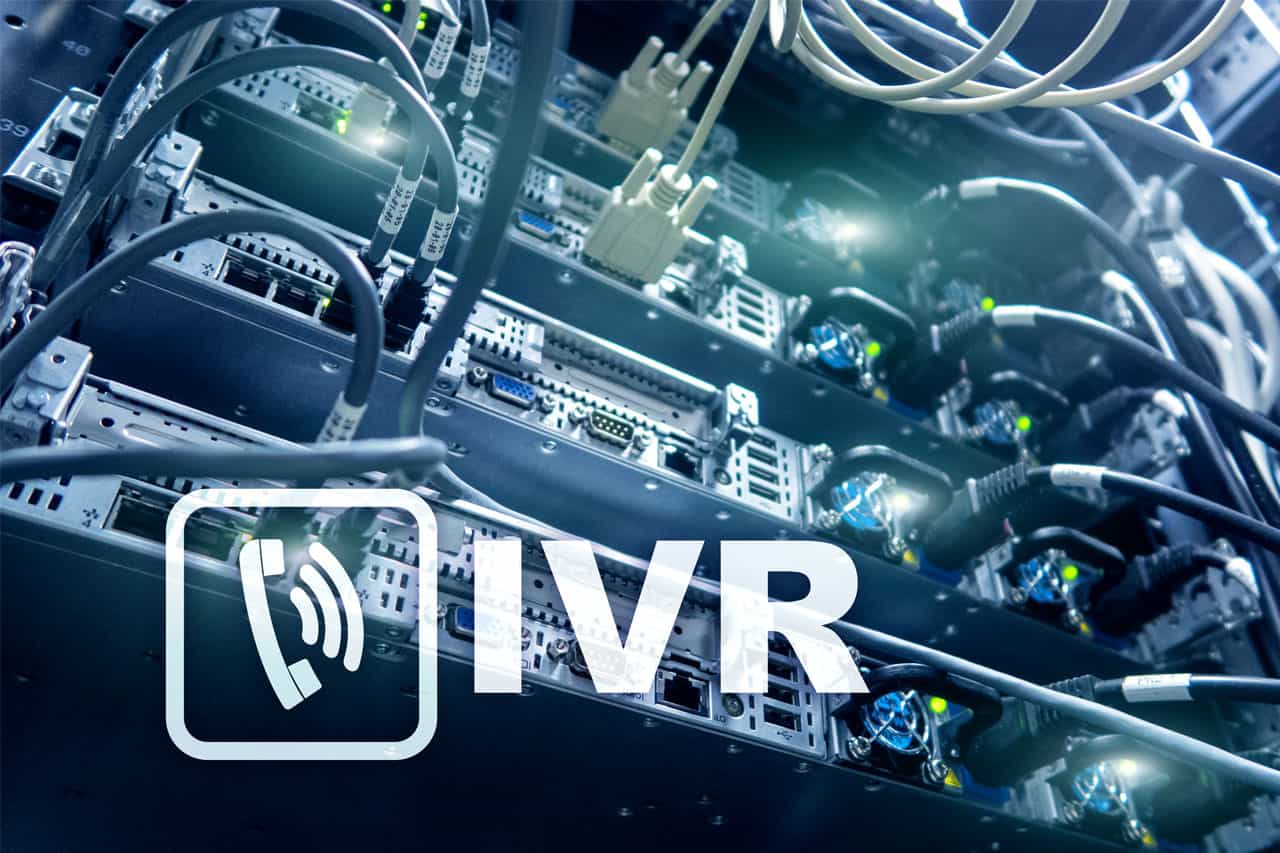
Understanding the Basics of Interactive Voice Response (IVR) Systems
In today’s fast-paced world, businesses are constantly looking for innovative ways to enhance customer experiences and streamline their operations. One such technology that has gained significant prominence in achieving these objectives is Interactive Voice Response (IVR) systems. In this article, we will delve deep into the basics of IVR systems, exploring their functionalities, benefits, and how they are transforming customer interactions.
Introduction to IVR Systems
Interactive Voice Response (IVR) systems are a cornerstone of modern customer service and business operations. These automated telephony systems are designed to interact with callers using voice prompts and keypad inputs. IVR systems serve as virtual attendants, guiding callers through a series of options and providing information or assistance based on their selections.
IVR technology has evolved significantly over the years, becoming an integral part of various industries, including healthcare, finance, telecommunications, and retail. Its versatility lies in its ability to efficiently handle routine tasks, answer frequently asked questions, and even facilitate complex processes such as appointment scheduling and payment processing.
How IVR Systems Work
Understanding the inner workings of IVR systems is essential to appreciate their functionality. IVR systems operate based on predefined scripts and decision trees. When a caller interacts with the system, it uses voice recognition or keypad inputs to determine the appropriate response. This process involves several key steps:
- Call Initiation: The interaction begins when a caller dials a designated phone number.
- Voice or Keypad Input: The IVR system prompts the caller to speak or enter a response using the keypad.
- Voice Recognition: If voice recognition is used, the system converts the caller’s spoken words into text for processing.
- Decision Tree: The IVR system processes the input and follows a predefined decision tree to determine the next steps.
- Providing Information or Taking Action: Based on the caller’s input and the decision tree, the IVR system can provide information, route the call to a specific department, or perform actions such as bill payments.
- Completion and Closure: The interaction concludes with the caller receiving the required information or successfully completing their task.
Key Components of IVR Systems
To function effectively, IVR systems rely on various key components:
- Voice Recognition: Advanced voice recognition software is at the heart of IVR systems, enabling them to understand and process spoken commands accurately.
- Database Integration: IVRs are often connected to databases containing relevant information, such as customer records or product details. This integration allows the system to provide real-time information.
- Call Routing: IVR systems are skilled at directing calls to the appropriate departments or agents based on the caller’s input, ensuring efficient customer service.
- Text-to-Speech (TTS): Some IVR systems utilize text-to-speech technology to convert text-based information into spoken words. This feature enhances the flexibility and dynamic nature of IVR interactions.
These components work in harmony to create seamless and efficient interactions between callers and automated systems.
Benefits of Using IVR Systems
The adoption of IVR systems offers numerous benefits to businesses and organizations:
- Cost Efficiency: IVRs significantly reduce the need for human agents, leading to cost savings in staffing and training.
- 24/7 Availability: IVR systems operate round the clock, ensuring that customers can access information and support at any time, regardless of business hours.
- Consistency: IVRs provide consistent and accurate information, reducing the risk of human errors in customer interactions.
- Improved Customer Satisfaction: By offering quick and efficient service, IVR systems enhance overall customer satisfaction. Callers can get the information they need without waiting on hold.
- Data Collection: IVR systems can collect valuable data about customer preferences and frequently asked questions, helping businesses improve their services and products.
These advantages make IVR systems an attractive choice for businesses seeking to enhance customer experiences and streamline operations.
Common Applications of IVR Systems
IVR systems are versatile and find applications across various industries:
- Automated Customer Support: IVRs handle a wide range of customer inquiries, from checking account balances to troubleshooting technical issues. They can provide automated solutions to common problems, freeing up human agents for more complex issues.
- Appointment Scheduling: In the healthcare and service industries, IVR systems enable customers to schedule appointments conveniently. Callers can select available time slots, reducing the burden on administrative staff.
- Payment Processing: IVRs facilitate secure payment processing by guiding callers through payment options and confirming transactions. This is particularly valuable for bill payments, donations, and purchasing services.
- Surveys and Feedback: Businesses use IVR systems to collect feedback from customers through automated surveys. This information helps organizations make data-driven decisions and improve their products or services.
The flexibility of IVR systems makes them a valuable asset in enhancing customer engagement and operational efficiency.
Designing an Effective IVR System
Creating an effective IVR system requires careful planning and consideration of user needs:
- Understanding Customer Needs: Successful IVR systems are designed with the user in mind. To create a system that truly benefits callers, businesses must identify common queries and pain points.
- Simplify Navigation: IVR menus should be clear and concise. Users should be able to navigate the system easily and reach their desired destination without confusion.
- Offer Escalation Options: Recognizing that some issues may be too complex for automation, IVR systems should provide options for callers to speak with a live agent. This ensures that customers receive the assistance they need.
- Regularly Update Content: To maintain relevance, IVR scripts and prompts should be updated regularly to reflect changes in services, products, or customer inquiries.
By focusing on these principles, businesses can create IVR systems that enhance the customer experience and streamline operations.
Challenges in IVR Implementation
While IVR systems offer numerous benefits, their implementation can present challenges:
- Complex Scripting: Crafting effective and user-friendly voice prompts can be a complex task. Ensuring that prompts are clear, concise, and engaging requires careful scriptwriting.
- User Frustration: Poorly designed IVR systems can frustrate callers, leading to negative customer experiences. It’s crucial to strike a balance between automation and human touch.
- Integration Issues: Integrating IVR systems with existing infrastructure and databases can be challenging. Compatibility issues may arise, necessitating thorough testing and troubleshooting.
Best Practices for IVR Scripting
Creating clear and engaging IVR scripts is essential for a positive user experience:
- Using Natural Language: IVR prompts should sound conversational and avoid overly technical or robotic language. Natural language promotes engagement and understanding.
- Offering Choices: When presenting options to callers, keep menus concise and provide relevant choices. Avoid overwhelming users with too many selections.
- Testing and Iterating: Continuously test IVR scripts and gather feedback from users. Use this feedback to make improvements and refine the system over time.
By adhering to these best practices, businesses can create IVR systems that are not only efficient but also user-friendly.
Measuring IVR System Performance
Evaluating the performance of an IVR system is crucial to its ongoing success. Key performance metrics include:
- Call Completion Rates: Tracking how often callers successfully complete their tasks without needing to speak to a live agent.
- Customer Satisfaction: Collecting feedback from callers to gauge their satisfaction with the IVR experience.
- Resolution Times: Measuring how quickly IVR systems can address customer inquiries or issues.
- Call Volume: Analyzing the volume of calls handled by the IVR system to identify trends and patterns.
Regularly monitoring these metrics allows businesses to fine-tune their IVR systems for optimal performance and customer satisfaction.
Future Trends in IVR Systems
The evolution of IVR technology continues, driven by advancements in artificial intelligence (AI) and machine learning. Some future trends to watch out for include:
- Enhanced Voice Recognition: AI-driven voice recognition systems will become even more accurate, allowing IVR systems to better understand natural language and dialects.
- Personalization: IVR systems will use AI to provide personalized responses and recommendations based on customer history and preferences.
- Omnichannel Integration: IVR systems will seamlessly integrate with other customer service channels, creating a unified customer experience.
- Voice Biometrics: Enhanced security measures, such as voice biometrics, will become more common to verify customer identities.
These trends promise to make IVR systems even more efficient and customer-centric in the future.
The Human Touch in IVR Systems
While automation is a key feature of IVR systems, maintaining a human touch is essential. Customers appreciate the convenience of IVR systems, but they also value the option to speak with a live agent for complex or sensitive issues. Striking the right balance between automation and human interaction is crucial for delivering exceptional customer service.
Security Considerations for IVR Systems
Security is paramount when handling sensitive customer information and transactions through IVR systems. To ensure data protection and secure transactions, businesses must:
- Encrypt Data: Implement robust encryption protocols to safeguard customer data during transmission.
- Authentication: Use multi-factor authentication to verify caller identities and prevent unauthorized access.
- Regular Auditing: Conduct regular security audits and assessments to identify vulnerabilities and address them promptly.
- Compliance: Ensure that the IVR system complies with relevant data protection regulations, such as GDPR or HIPAA.
By prioritizing security measures, businesses can build trust with their customers and protect sensitive information.
Choosing the Right IVR System
Selecting the right IVR system for your organization involves careful consideration of several factors:
- Scalability: Ensure that the IVR system can accommodate your organization’s growth and evolving needs.
- Customization Options: Look for systems that allow you to tailor the IVR experience to your specific requirements.
- Vendor Reputation: Research and choose a reputable IVR system provider with a track record of successful implementations.
- Integration Capabilities: Assess how well the IVR system can integrate with your existing infrastructure and databases.
Making an informed choice is essential to maximize the benefits of IVR technology.
Conclusion
In conclusion, Interactive Voice Response (IVR) systems have become indispensable tools for businesses seeking to enhance customer experiences, streamline operations, and improve efficiency. By understanding how IVR systems work, their key components, benefits, and best practices for implementation, organizations can leverage this technology to create positive customer interactions. With the ongoing evolution of IVR technology and a focus on security and human touch, the future of IVR systems is bright, promising even more advanced and personalized interactions with customers.
FAQs
- What industries benefit most from IVR systems?
- IVR systems find applications in various industries, including healthcare, finance, and customer service, where they streamline processes and improve customer interactions.
- How can I ensure my IVR system is user-friendly?
- Designing a user-friendly IVR system involves simplifying navigation, offering clear options, and regularly updating content based on customer feedback.
- Are IVR systems secure for handling sensitive information?
- Yes, IVR systems can be secure if designed and implemented with robust security measures to protect customer data and transactions.
- What are the future trends in IVR systems?
- The future of IVR systems includes advancements in AI and machine learning to enhance voice recognition and personalization.
- Can IVR systems completely replace human agents?
- While IVR systems are efficient, maintaining a human touch is essential, and they should allow customers to reach human agents when needed for complex or sensitive issues.



